Lince 1947-BOBBY180-E-AM Istruzioni per l'uso
- Categoria
- Illuminazione di comodità
- Tipo
- Istruzioni per l'uso
Questo manuale è adatto anche per

IT
EN
RILEVATORI DA ESTERNO A TENDA CON
ANTIMASCHERAMENTO
Manuale di installazione, uso e manutenzione
Installation, operation and maintenance manual
OUTDOOR CURTAIN DETECTORS WITH
ANTIMASKING
ART. / ITEM:
1946-BOBBY180-24-AM-V
1957-BOBBY180-24-V
1947-BOBBY180-E-AM
1948-BOBBY180-E
RIVELATORI A 180°
DA ESTERNO
OUTDOOR 180°
DETECTOR
MADE IN ITALYMADE IN ITALY
La dichiarazione CE del presente articolo è reperibile sul sito
www.lince.net.
L’installazione dei prodotti riportati nel presente manuale deve
essere eseguita da personale specializzato in possesso delle
dovute conoscenze tecniche; i prodotti sono stati progettati per
utilizzo in contesti domestici e civili.
The CE declaration of this item is available on www.lince.net
website.
The installation of the products listed in this manual must
be performed by specialized personnel with the necessary
technical knowledge; the products have been designed for use
in domestic and civil contexts.

2
LINCE ITALIA
- Istruzioni originali -
INDICE
1. INTRODUZIONE
Il rilevatore da esterno a tenda 1946-BOBBY180-24-AM-V è
composto da 5 sensori passivi dual PIR, 2 microonde da 24
GHz e 5 IR attivi, gestiti da un sosticato algoritmo. L’elettronica
particolarmente evoluta è stata progettata per garantire le
massime prestazioni in ambiente esterno. La protezione è a
tenda con 2 fasci laterali (a 180°) di 5° (con portata massima 15
m per lato) e uno frontale, sempre di 5° (portata massima 1 m),
con funzione di antiavvicinamento. I PIR inferiori sono orientabili
anche verticalmente e questo permette di ottenere un range di
rilevazione compreso tra 3 m e 15 m (indipendente per ogni lato);
la distanza dei fasci laterali dal muro è regolabile a 0° o 3°. E’
dotato di 4 trimmer per la regolazione indipendente dei PIR e delle
MW. I sensori, gestiti da un microcontrollore, possono essere
combinati tra loro a seconda delle esigenze di installazione (triplo
AND, MW in AND con ogni PIR, AND dei PIR con MW esclusa).
Se settato in triplo AND permette la discriminazione degli animali
(Pet-Immunity) su entrambi i lati. Gestione indipendente delle
uscite, allarme e antimascheramento, tramite due relè allo
stato solido. Dispone di una serie di funzioni innovative come
la funzione ECO (fa in modo che la MW si accenda solo a
seguito della rilevazione di uno dei due PIR), il CWS (Cross-
Walking Sensibility, che permette di discriminare le direzioni di
attraversamento) ed il clever (PIR1|PIR2) & MW, se si attiva
l’antiavvicinamento. Il ssaggio del rilevatore può essere sia a
parete che su palo (altezza 100 ÷ 120 m).
1. INTRODUZIONE ................................................................................................ 2
1.1 CARATTERISTICHE GENERALI ........................................................... 3
1.2 CARATTERISTICHE TECNICHE ........................................................... 3
1.3 CONTENUTO DELLA CONFEZIONE .................................................... 4
1.4 IDENTIFICAZIONE DELLE PARTI ......................................................... 4
1.4.1 Vista frontale ...............................................................................5
1.4.2 Vista laterale sinistra ................................................................... 6
1.4.3 Vista laterale destra ..................................................................... 7
2. INSTALLAZIONE............................................................................................... 8
2.1 AVVERTENZE GENERALI ..................................................................... 8
2.2 MONTAGGIO DEL RILEVATORE .......................................................... 8
2.3 COLLEGAMENTI ELETTRICI .............................................................. 10
2.4 CONFIGURAZIONE DEL RILEVATORE .............................................. 11
2.4.1 Regolazione portata della microonda ........................................ 11
2.4.2 Regolazione PIR bassi .............................................................. 11
2.4.3 Logica di funzionamento ........................................................... 12
2.4.4 Scostamento dal muro .............................................................. 13
2.4.5 Congurazione dei dip-switch .................................................. 14
2.4.6 Funzionamento in AND ............................................................. 15
2.4.7 Antimascheramento .................................................................. 16
2.4.8 Funzione CLEVER .................................................................... 16
2.4.9 Funzione CWS® ......................................................................... 16
2.4.10 Funzione ECO ........................................................................... 17
3. ACCESSORI DISPONIBILI ............................................................................. 17
3.1 STAFFA ................................................................................................ 17
3.2 COVER PARAPIOGGIA ....................................................................... 17
3.3 KIT RISCALDATORE ...........................................................................17
3.4 KIT USCITE AUSILIARIE ..................................................................... 17
3.4.1 Descrizione dei morsetti ............................................................ 18
4. RICERCA DEI GUASTI E/O MALFUNZIONAMENTI .................................... 18
5. MANUTENZIONE E VERIFICHE PERIODICHE ............................................. 19
6. SMALTIMENTO E ROTTAMAZIONE .............................................................. 19
1. DESCRIPTION .................................................................................................. 2
1.1 GENERAL FEATURES .......................................................................... 3
1.2 TECHNICAL FEATURES ....................................................................... 3
1.3 PACKAGING CONTENTS ...................................................................... 4
1.4 PARTS IDENTIFICATION....................................................................... 4
1.4.1 Front view .................................................................................... 5
1.4.2 Left side view ............................................................................... 6
1.4.3 Right side view ............................................................................ 7
2. INSTALLATION ................................................................................................. 8
2.1 GENERAL PRECAUTIONS ................................................................... 8
2.2 MOUNTING THE DETECTOR ............................................................... 8
2.3 ELECTRICAL WIRING ......................................................................... 10
2.4 DETECTOR ADJUSTMENT ................................................................. 11
2.4.1 MW range adjustment ............................................................... 11
2.4.2 Lower PIRs adjustment ............................................................. 11
2.4.3 Working logic ............................................................................. 12
2.4.4 Spacing from the wall ................................................................ 13
2.4.5 DIP-Switches conguration ....................................................... 14
2.4.6 AND mode operation ................................................................. 15
2.4.7 Antimasking ............................................................................... 16
2.4.8 CLEVER function ...................................................................... 16
2.4.9 CWS® function ........................................................................... 16
2.4.10 ECO function ............................................................................. 17
3. AVAILABLE ACCESSORIES .......................................................................... 17
3.1 BRACKET .............................................................................................17
3.2 RAIN COVER ....................................................................................... 17
3.3 HEATER KIT ......................................................................................... 17
3.4 ADDITIONAL OUTPUTS KIT ............................................................... 17
3.4.1 Terminal block description ......................................................... 18
4. TROUBLE SHOOTING ................................................................................... 18
5. MAINTENANCE AND PERIODIC CHECKS ................................................... 19
6. DISPOSAL AND SCRAPPING ........................................................................ 19
- Translation of the original instructions (original instructions in Italian) -
CONTENTS
1. DESCRIPTION
The curtain outdoor detector 1946-BOBBY180-24-AM-V consists
of 5 dual PIR sensors, two 24 GHz microwaves and 5 active IRs,
managed by a sophisticated algorithm. The particularly advanced
electronics have been designed to guarantee maximum
performance in outdoor environments. The curtain protection
provides 2 side beams (oriented at 180°) of 5° (with a maximum
coverage of 15 m per side) and a front one, always of 5° (maximum
coverage of 1 m), that works as proximity-alert. The lower PIR
can also be oriented vertically so allowing to obtain a coverage
range between 3 m and 15 m (independent for each side); the
distance of the side beams from the wall is adjustable to 0° or
3°. It is equipped with 4 trimmers, for PIRs and MW independent
regulation. The sensors, managed by a microcontroller, can be
combined according to the installation needs (triple AND, MW in
AND with each PIR, AND of the PIR with MW excluded). If set
in triple AND allows the discrimination of animals (Pet-Immunity)
on both sides. Independent management of the outputs, alarm
and Antimasking through two solid state relays. It has a series
of innovative features such as the ECO function (it makes the
MW turn on only after the detection of one of the two PIRs), the
CWS (Cross-Walking Sensibility, which allows to discriminate
the crossing direction) and the clever ((PIR1|PIR2) & MW, if
proximity-alert is activated. The detector can be xed either on
the wall or on a pole (height 100 ÷ 120 m)
Le informazioni riportate in questo manuale sono state compilate con cura, tuttavia
LINCE ITALIA S.r.l. non può essere ritenuta responsabile per eventuali errori e/o
omissioni. LINCE ITALIA S.r.l. si riserva il diritto di apportare in ogni momento e
senza preavviso, miglioramenti e/o modiche ai prodotti descritti nel presente
manuale. Consultare il sito www.lince.net per le condizioni di assistenza e garanzia.
LINCE ITALIA S.r.l. pone particolare attenzione al rispetto dell’ambiente. Tutti i
prodotti ed i processi produttivi sono progettati con criteri di eco-compatibilità.
Il presente articolo è stato prodotto in Italia.
• L’aziendahaunsistemadigestionedellaqualitàcerticatosecondola
norma ISO 9001:2015 (n° 4796 - A)
• L’aziendahaunsistemadigestione ambientalecerticatosecondola
norma ISO 14001:2015 (n° 4796 - E)
• L’azienda ha un sistema di gestione della salute e sicurezza sul lavoro
certicatosecondolanorma45001:2018(n°4796-I)
The information in this manual has been issued with care, but LINCE ITALIA S.r.l.
will not be responsible for any errors or omissions. LINCE ITALIA S.r.l. reserves the
right to improve or modify the products described in this manual at any time and
without advance notice.Terms and conditions regarding assistance and the product
warranty can be found at Lince Italia’s website www.lince.net. LINCE ITALIA
S.r.l. makes it a priority to respect the environment. All products and production
processes are designed to be eco-friendly and sustainable.
This product has been Made in Italy.
• Thecompanyhasacertiedsystemofqualitymanagementaccording
to ISO 9001:2015 (n° 4796 - A) standard.
• The company has a certied system of environmental management
according to ISO 14001:2015 (n° 4796 - E) standard.
• The company has a certied system of health and work security
managementaccordingto45001:2018(n°4796-I)standard.

3
LINCE ITALIA
1.2 CARATTERISTICHE TECNICHE
1948-BOBBY180-E 1946-BOBBY180-24-AM-V 1947-BOBBY180-E-AM 1957-BOBBY180-24-V
Alimentazione
Power supply 10 ÷ 15 Vcc.
Consumo @ 12 Vcc
Current consumption @ 12 Vdc 15 mA
40 mA (15 mA con funzione ECO
attiva)
40 mA (15 mA if the ECO funcion
is active)
15 mA
40 mA (15 mA con funzione
ECO attiva)
40 mA (15 mA if the ECO
funcion is active)
Contatti di allarme e antimasking
Alarm,maskingcontacts MOS FET relay 100 mA 35 V, 2 Ω max.
Tempo di allarme
Alarm time 1 s
Antimasking
Antimasking NO SI / YES NO
Antiavvicinamento
Proximity alert NO SI / YES NO SI / YES
LED di segnalazione
Signal LEDs 6 8 6 8
Microonda
Microwave NO SI / YES NO SI / YES
Funzione CLEVER
CLEVER Function NO SI / YES
Funzione ECO
ECO Function NO SI / YES NO SI / YES
Ampiezza orizzontale del singolo fascio
Horizontal Coverage (single beam) 5°
Regolazione della distanza dal muro
Wall distanza adjustment 3°
Staffa per ssaggio a muro
Bracketforwallxing
In acciaio inox (in dotazione)
Stainless steel (supplied)
Grado di protezione contenitore
Enclosure degree of protection IP44
Classe ambientale
Environmentalclassication Class IV (EN 50131-1:2006-10)
Grado di sicurezza
Security grading
Grade 2
(EN 50131-2-2:2008-01)
Grade 3
(EN 50131-2-4:2008-01) Grade 2 (EN 50131-2-2:2008-01)
Temperatura di esercizio
Operating temperature -25 °C ÷ + 60 °C
Dimensioni esterne (LxPxA mm)
External dimensions (WxDxH mm) 81x76x189 mm
Peso (g)
Weight (g)
470 (compreso staffa)
470 (including bracket)
Contenitore
Casing
Policarbonato resistente UV
UV resistant polycarbonate
Portata di rilevazione
Detection range
3 ÷ 15 m per lato
3 ÷ 15 m each side
1.2 TECHNICAL FEATURES
1.1 CARATTERISTICHE GENERALI
• Rilevazione: 5 PIR + 2 microonde con frequenza 24 GHz
• Rilevazione: indipendente lato dx, sx e frontale
• Portata di rilevazione: regolabile 3 ÷ 15 m (indipendente per
ogni lato)
• Lente: Fresnel made in USA
• Pet-Immunity: per entrambi i lati
• Antiavvicinamento frontale: PIR, con portata 1 m
• Sensori PIR: ciascuno protetto da sistema di rilevazione del
mascheramento
• Filtri solari: 5, uno per ogni PIR, made in Japan (elevata
immunità alla luce bianca)
• Trimmer: 4, per regolazione indipendente sensibilità PIR e
MW
• Dip-switch per congurazione delle funzioni: 10 (AND/OR,
sensibilità AM, ecc.)
• LED di segnalazione: 8
• Funzioni: ECO, clever, CWS, antistrappo, antiapertura
• Elaborazione digitale del segnale: presente
• Compensazione digitale della temperatura: presente
• Immunità alle interferenze EMI/RFI: Conforme a
• EN 50130-4:2011
• Copertura: policarbonato da esterno
• Circuito elettronico: protetto epossidicamente contro
l’umidità
1.1 GENERAL FEATURES
• Detection: 5 PIRs + 2 MWs 24 GHz
• Detection: indipendent for right, left and front side
• Detection range: adjustable from 3 to 15 m (independent on
each side)
• Lens: Fresnel made in the USA
• Pet-Immunity: for both sides
• Front proximity-alert: PIR, with 1 m coverage
• PIR sensors: each protected by a masking detection system
• Sun lters: 5, one for each PIR, made in Japan (high
immunity to white light)
• Trimmers: 4, for PIR and MW sensitivity independent
adjustment
• Dip-switch for conguration of functions: 10 (AND/OR, AM
sensitivity, etc.)
• Signalling LEDs: 8
• Functions: ECO, clever, CWS, anti-tampering, anti-opening
• Digital signal processing: present
• Digital temperature compensation: present
• Immunity to EMI/RFI interferencies: complies with EN
50130-4:2011
• Cover: polycarbonate for outdoor use
• Electronic board: epoxy-protected against moisture

4
LINCE ITALIA
L
A
D
G
H
E
F
I
C
B
H
1.3 CONTENUTO DELLA CONFEZIONE
Fig. 1
Tabella 1
Part. Identicazione
ARilevatore
BStaffa
CKit di ssaggio al muro
DIstruzioni
C
AB
D
1.3 PACKAGING CONTENTS
Table 1
Ref. Identication
ADetector
BBracket
CKit for wall mounting
DInstructions
Fig. 2
1.4 IDENTIFICAZIONE DELLE PARTI 1.4 PARTS IDENTIFICATION
Tabella 2
Part. Identicazione
AViti per ssaggio su staffa
BVite di ssaggio del coperchio
CCoperchio con lente di Fresnel
DManopola di regolazione superiore
EManopola di regolazione inferiore
FStaffa ssaggio a parete in acciaio Inox
GStaffe a “U” (q.tà 2) – non fornite contenute nel kit ac-
cessorio art. 001805/00102AA
HVite metrica M4 x 6 inox per ssaggio staffe ad “U” (q.tà
4) contenute nel kit accessorio art. 001805/00102AA
IViti metriche M4 x 10 inox (q.tà 4) contenute nel kit ac-
cessorio art. 001805/00102AA
Table 2
Ref. Identication
AScrews for bracket xing
BCover xing screw
CCover with Fresnel lens
DKnob for upper adjusting
EKnob for lower adjusting
FStainless steel wall xing bracket
G“U” Shaped bracket (2 pcs) – not supplied enclosed into
the kit item 001805/00102AA
HStainless Steel metric screw M4 x 6 for “U” brackets
xing (4 pcs ) enclosed into the kit item 001805/00102AA
IStainless Steel metric screw M4 x 10 enclosed into the
kit item 001805/00102AA

5
LINCE ITALIA
L
A
F
G
C
B
Fig. 3
1.4.1 Vista frontale 1.4.1 Front view
Tabella 3
Part. Identicazione
AMicroswitch antisabotaggio
BForo vite antisabotaggio
CRegolazione PIR inferiori
DManopola regolazione PIR inferiore sinistro
EManopola regolazione PIR inferiore destro
FPIR frontale antiavvicinamento
GAntimascheramento PIR frontale
HRegolazione superiore scostamento dal muro
IRegolazione inferiore scostamento dal muro
LForo passaggio cavi
MForo per passaggio cavi e alloggiamento guarnizione
per basettino ausiliario
Table 3
Ref. Identication
AAnti-tamper Microswitch
BAnti-tamper hole
CLower PIRs adjustment
DLeft lower PIR adjustment knob
ERight lower PIR adjustment knob
FAnti-approaching frontal PIR
GProximity alert frontal PIR
HUpper offset adjustment from the wall
ILower offset adjustment from the wall
LHole for cable passage
MHole for cable passage and gasket seat for auxiliary
output kit
D E
I
H
L
M
M

6
LINCE ITALIA
L
A
G
C
B
Fig. 4
1.4.2 Vista laterale sinistra 1.4.2 Left side view
Tabella 4
Part. Identicazione
ATrimmer PIR lato sinistro
BTrimmer MW sinistra
CLED verde PIR superiore
DLED giallo MW
ELED rosso allarme
(lampeggio nel caso di rilevazione del PIR frontale)
FLED verde PIR inferiore
GPIR sinistro superiore
HAM sinistro superiore
IPIR sinistro inferiore
LAM sinistro inferiore
Table 4
Ref. Identication
ALeft PIR trimmer
BLeft MW trimmer
CLeft upper PIR green LED
DMW yellow LED
EAlarm red LED
(ashing in case of detection of the front PIR)
FLeft lower PIR green LED
GLeft upper PIR
HAM left upper
ILeft lower PIR
LAM left lower
D
E
F
H
L
I

7
LINCE ITALIA
Fig. 5
1.4.3 Vista lato destro 1.4.3 Right side view
Tabella 5
Part. Identicazione
AMorsettiera
BConnettore uscite ausiliare
CDip Switch
DTrimmer PIR lato destro
ETrimmer MW destro
FAM destro superiore
GAM destro inferiore
HLED verde PIR superiore
ILED giallo MW
LLED rosso allarme
(lampeggio nel caso di rilevazione del PIR frontale)
MLED verde PIR inferiore
NPIR destro superiore
OPIR destro inferiore
Table 5
Ref. Identication
ATerminal block
BAdditional output connector
CDip-Switch
DRight PIR trimmer
ERight MW trimmer
FAM right upper
GAM right lower
HRight upper PIR green LED
IMW yellow LED
LAlarm red LED
(ashing in case of detection of the front PIR)
MRight lower PIR green LED
NRight upper PIR
ORight lower PIR
A
G
CB
D
E
F
H
L
I
M N
O

8
LINCE ITALIA
Fig. 6
2. INSTALLAZIONE
2.1 AVVERTENZE GENERALI
Prima dell'installazione vericare le seguenti condizioni:
• la parete non deve presentare avvallamenti o sporgenze
eccessive;
• installare il rilevatore su superci rigide prive di vibrazioni;
• evitare il posizionamento del rilevatore vicino a fonti di
calore o alla luce diretta del sole;
• evitare la riessione dell’energia elettromagnetica su ampie
superci quali, ad esempio, specchi, pareti metalliche, ecc.;
• evitare di puntare il rilevatore su lampade uorescenti o
comunque di porlo nelle immediate vicinanze delle stesse;
• Per i collegamenti è consigliabile utilizzare un cavo
schermato e, preferibilmente, un cavo per ogni rilevatore;
• Separare i cavi dell’impianto di allarme da quelli della rete
elettrica.
Il rilevatore può essere installato in ambiente esterno (secondo
quanto prescritto dalla normativa EN 50131-1 nella classe
ambientale IV).
• Evitare di puntare il rilevatore verso oggetti in movimento o,
se ciò risultasse inevitabile, prestare la massima cura nelle
regolazioni al ne di evitare falsi allarmi.
• Apporre sempre il coperchio con lente di Fresnel prima di
effettuare le prove di copertura, senza lente il rilevatore non
funziona.
2.2 MONTAGGIO DEL RILEVATORE
L’altezza di installazione deve essere compresa tra i 100 cm min.
ed 120 cm max (terreno non in pendenza).
Se nell’area di copertura c’è la possibilità che vi sia presenza di
animali di medie dimensioni si consiglia di installare il rilevatore
ad una altezza tale da evitare che il fascio superiore rilevi la
presenza dell’animale stesso.
Fissare la staffa di ancoraggio a muro, o su palo, stabile ed
immune da oscillazioni
• svitare la vite B (g. 2) e levare il coperchio con lente;
• ssare l’unità rilevatore ad innesto (vedi g. 6) sulla staffa ed
avvitare le due viti A (g. 2), avendo cura di passare il cavo
dei collegamenti come riportato nelle g. 4 e 5;
• effettuare le regolazioni del rilevatore;
• applicare nuovamente il coperchio con lente ssandolo con la
vite B (g. 2);
Attenzione: la massima distanza di copertura (15 m) si
ottiene solamente installando il rilevatore a 120 cm da terra
2. INSTALLATION
2.1 GENERAL PRECAUTIONS
Before starting the installation, pay attention that:
• the wall does not have any pronounced depressions or
protrusions;
• to install the detector on rigid surfaces, free of vibrations;
• to avoid to x the detectors near heat sources or at direct
sunlight;
• to avoid electromagnetic energy reection on wide surfaces
such as mirrors, metal walls, etc;
• to avoid to x the detector in front of uorescent lamps or in
proximity of them;
• to connections shielded cable is suggested and one cable
per detector is preferred;
• to separate the alarm system cables from the mains cables.
The detector can be installed outdoors (according to the standard
EN 50131-1 in environment class IV).
• Avoid to direct the detector towards moving objects or, if
impossible, please take care in adjusting the detector in
order to avoid false alarms.
• Be sure to install the cover with Fresnel lens before the
detector testing. Without cover, the detector doesn’t work.
2.2 MOUNTING THE DETECTOR
Installation height must be between 1 m and 1.20 m (not tilted
ground).
If medium-sized animals might enter the coverage area, we
recommend installing the detector at a height that allows you to
prevent the upper beam from detecting their presence Fix the
support on a wall or on a stable pole
• Unscrew the B (g. 2) screw an remove the front cover with
lens.
• Screw up the detector (see g. 6) on the support using the
2 provided screws A (g. 2) passing through the connection
cable as shown in the gures 4 and 5.
• set the detector;
• mount again the front cover and xing it with screw B (see
g. 2).
Important: the maximum detection range (15 meters) is
obtained only if the installation height is 120 cm.

9
LINCE ITALIA
Fig. 7
Fig. 8
Fig. 9
Fig. 10
• Effettuare 4 fori nel muro ed inserire
i tasselli;
• Passare i cavi attraverso il foro della
staffa;
• Fissare ora la staffa al muro o, se su
palo, seguire le indicazioni di g. 5.
Nel ssare la staffa al muro fare attenzione
alla perpendicolarità rispetto al terreno.
Nel caso di ssaggio su palo procedere
come illustrato in gura ssando la staffa
metallica principale alle due staffe da palo
(opzionali)
Per ottenere il passaggio
del cavo, forare l’apposito
pretaglio utilizzando un
oggetto appuntito di adeguato
diametro, giravite o simile.
• Poggiare il corpo del rilevatore sulla staffa e farlo scendere
no in fondo per far coincidere i fori di ssaggio del corpo
con quelli della staffa
Dopo aver effettuato le regolazioni del
PIR 2, chiudere il rilevatore inserendo il
coperchio dall’alto verso il basso come
illustrato, quindi avvitarlo tramite la vite
metrica in acciaio inox in dotazione.
Fix the support onto the mounting support
with supplied screws.
Place the brackets (not included) around
the pole and fasten using the pole locking
screws.
• Make four holes on the wall and
insert the plugs;
• Pass the wires through the support
slot and x the metallic support on
the wall;
• To x the metallic support on the
pole, please see g. 5.
Fix the metallic support on the wall
perpendicularly to the ground
In order to obtain a passage
for the cables, break the plastic
pre-cut using a pointed object of
appropriate diameter (screwdriver
or similar)
• Locate the detector body on the metallic support and slide it
down, then x it using the supplied screws.
Adjust PIR2, close the detector inserting
downwards the coverage as shown in
gure.
Fix the cover using the metric screw.

10
LINCE ITALIA
MONTAGGIO CORRETTO
Montare il rilevatore in posizione verticale e perpendicolarmente
al terreno.
CORRECT INSTALLATION
Position the detector vertically and perpendicularly to the ground
MONTAGGIO NON CORRETTO (rilevatore inclinato
verticalmente)
Se il rilevatore viene montato inclinato verso il basso la portata
può risultare ridotta.
WRONG INSTALLATION (detector tilted downwards)
If the detector is not installed perpendicularly to the ground, as
shown, operational reliability may result decreased.
Fig. 11
Fig. 13
Il rilevatori sono equipaggiati
con speciali ltri per i disturbi
dei raggi solari; nei limiti del
possibile è comunque consi-
gliata l’installazione evitando il
sole diretto
The detectors are designed
to avoid any light disturban-
ce. However too strong light
as direct sunlight may cause
detector instability. It’s recom-
mended to avoid such type of
installation.
- + ALARM TAMPER MASK
Fig. 14
2.3 COLLEGAMENTI ELETTRICI
+ - : Alimentazione 12 Vcc
(10 ~ 15 Vcc)
MASK: Uscita antimask:
contatto normalmente chiuso a
riposo
TAMPER: Uscita per la linea
Antisabotaggio 24 h: contatto
normalmente chiuso a riposo
ALARM: Uscita allarme: contatto normalmente
chiuso a riposo.
2.3 ELECTRICAL WIRING
+ - : Power 12 Vdc (10 ~
15 Vdc)
MASK: Anti-mask output:
normally closed contact in
standby
TAMPER: 24 h Antitamper
output: normally closed contact
in standby;
ALARM: Alarm output: normally closed relay in
stand by.
Fig. 12

11
LINCE ITALIA
Fig. 15
Fig. 16
2.4.2 Regolazione PIR inferiori
Effettuare la regolazione dei PIR inferiori tramite le relative
rotelle di regolazione dopo aver installato il rilevatore a 120
cm dal suolo. La portata massima indicata nelle gure è riferita
all’AND delle tecnologie e la posizione indicata è riferita alle
posizioni A, B, C, D (rif C. Fig.2)
2.4.2 Lower PIRs adjustment
7,5 m 7,5 m
Posizione B / Position B
5 m 5 m
Posizione A / Position A
Fig. 17
10 m 10 m
Posizione C / Position C
2.4 CONFIGURAZIONE DEL RILEVATORE 2.4 DETECTOR ADJUSTMENT
Adjust the lower PIRs using the relative adjustment knobs after
installing the detector at 120 cm from the ground. The maximum
range reported in the pictures is referred to AND of technologies
and the position is referred to positions A, B, C, D (ref C. Fig.2)
2.4.1 Regolazione portata microonda 2.4.1 MW range adjustment
Si raccomanda di diminuire la sensibilità della microonda destra
e sinistra in rapporto alla distanza di copertura desiderata.
Adjust the microwave sensibility on right and left in relationship
to the needed detection range.

12
LINCE ITALIA
Fig. 18
Fig. 19
5 m 10 m
15 m 15 m
Posizione D / Position D
Posizione A sx - C dx / Position A sx - C dx
Come già indicato in precedenza, il sistema brevettato del
rilevatore permette di sistemare i PIR inferiori in posizioni diverse
in modo da ottenere un’area di copertura a sinistra diversa
rispetto a quella di destra. Nell’esempio sottostante, il PIR di
destra è messo in posizione C mentre a sinistra in A in modo
da ottenere una copertura no a 5 m a sinistra e 10 m a destra.
As already indicated above, the patented detector system allows
placing the low PIRs in different positions in order to obtain a
coverage area on the left different from the right one. In the
example below, the right PIR is placed in position C while, on the
left, in A position in order to obtain a covering up to 5 m on the
left and 10 m on the right.
2.4.3 Logica di funzionamento
L’allarme viene generato nel caso si verichi una delle seguenti
condizioni:
• rilevata presenza lato sinistro;
• rilevata presenza lato destro;
• rivelato tentativo di avvicinamento frontale al rilevatore (solo
con 1946-BOBBY180-24-AM-V e 1957-BOBBY180-24-V).
Utilizzando il kit uscite ausiliare 1954-SR4 è possibile discriminare
da che lato si sia vericato il tentativo di effrazione e i tentativi di
avvicinamento frontale al rilevatore.
2.4.3 Working logic
The alarm is generated if one of the following conditions occurs:
• presence detected on the left side;
• presence detected on the right side;
• revealed attempt to approach the detector frontally (only for
1946-BOBBY180-24-AM-V and 1957-BOBBY180-24-V).
Using the 1954-SR4 auxiliary output kit it is possible to
discriminate on which side the attempted break-in occurred and
attempts to approach the detector frontally.
Fig. 20
15 m
1m
60cm
15 m
Vista dall’alto / View from the top
Lato sinistro
Left side
Lato destro
Right side
Antiavvicinamento / Proximity alert

13
LINCE ITALIA
2.4.4 Scostamento dal muro
Con le due manopole di regolazione superiore e inferiore è
possibile scostare di 1 mm l’elettronica dalla sua sede, cio
permette di variare contemporaneamente di 3 gradi la posizione
dei fasci superiore e inferiore. Con le manopole in posizione 2, è
possibile posizionare i fasci rasenti al muro, mentre in posizione
1 i fasci vengono scostati dal muro di 3°.
Fig. 21
Fig. 22
2.4.4 Spacing from the wall
With the two upper and lower adjustment knobs it is possible
to move the electronics by 1 mm from its seat, which allows to
change the position of the upper and lower beams at the same
time by 3°. With the knobs in position 2, you can place the beams
close to the wall, while in position 1 the beams are moved away
from the wall of 3°.

14
LINCE ITALIA
Le impostazioni dei dip-switch hanno effetto contempo-
raneamente sul lato destro e sul lato sinistro del rileva-
tore. Non è possibile impostare logiche di funzionamen-
to diverse tra lato sinistro e lato destro.
The dip-switch settings take effect simultaneously on
the right side and on the left side of the detector. It is not
possible to set different operating logics between the left
and right sides.
2.4.5 Congurazione dei DIP SWITCH
DIP 8 DIP 9 Descrizione del funzionamento
OFF OFF AM spento
OFF ON AM sensibilità livello 1
ON OFF AM sensibilità livello 2
ON ON
AM sensibilità livello 3
Nota: non consigliata in ambienti particolarmente
ostili
ON OFF
DIP 3
LED OFF LED ON
DIP 4
Antiavvicinamento ON Antiavvicinamento OFF
DIP 5
Funzione clever ON Funzione clever OFF
DIP 6
Funzione CWS ON Funzione CWS OFF
DIP 7
Direzione CWS allarme verso il ri-
levatore
Direzione CWS allarme allontanandosi dal
rilevatore
DIP 10
Funzione ECO ON Funzione ECO OFF
DIP 8 DIP 9 Operation description
OFF OFF AM OFF
OFF ON AM sensibility level 1
ON OFF AM sensibility level 2
ON ON
AM sensibility level 3
Note: not recommended in particularly hostile en-
vironments
ON OFF
DIP 3
LEDs OFF LEDs always ON
DIP 4
Proximity PIR ON Proximity PIR OFF
DIP 5
Clever function ON Clever function OFF
DIP 6
CWS function ON CWS function OFF
DIP 7
Direction CWS alarm towards the
detector
Direction CWS alarms moving away from the
detector
DIP 10
Funzione ECO ON Funzione ECO OFF
2.4.5 DIP SWITCHES conguration
1946-BOBBY180-24-AM-V
1957-BOBBY180-24-V
DIP SWITCH TECNOLOGIA
TECHNOLOGY
ALTRE FUNZIONI UTILIZZABILI
OTHER USABLE FUNCTIONS NOTE
NOTES
DIP1 DIP2 Rilevazione
Detection CWS ECO
OFF OFF
PIR1 AND PIR2
AND MW
Uscita allarme attiva solo quando tutte e tre le tecnologie rilevano la presenza.
Nota: utilizzabile nella maggior parte delle installazioni esterne.
Alarm output active only when all three technologies detect a presence.
Note: it can be used in most outdoor installations.
OFF ON
(PIR1 OR PIR2)
AND MW –
Uscita allarme attiva quando la MW ed uno qualsiasi dei due PIR rilevano la presenza.
Nota: non consigliata in ambienti particolarmente ostili.
Output alarm active when the MW and one of the two PIRs detect a presence.
Note: not recommended in particularly hostile environments.
ON OFF PIR1 AND PIR2 –
Uscita allarme attiva quando entrambi i PIR rilevano la presenza; non viene gestita la MW
Nota: la rilevazione della MW non ha inuenza sulle prestazioni del rilevatore.
Alarm output active when both PIRs detect a presence; the MW is not managed.
Note: the detection of the MW does not affect the performance of the detector.
ON ON
PIR1 AND MW
(PIR2 escluso/
excluded) – –
Uscita allarme attiva quando Il PIR 1 e la MW rilevano una presenza (PIR2 escluso)
Nota: non consigliata in ambienti particolarmente ostili
Alarm output active when PIR 1 and MW detect a presence (PIR2 excluded)
Note: not recommended in particularly hostile environments
1947-BOBBY180-E-AM
1948-BOBBY180-E
DIP SWITCH TECNOLOGIA
TECHNOLOGY
ALTRE FUNZIONI UTILIZZABILI
OTHER USABLE FUNCTIONS NOTE
NOTES
DIP1 DIP2 Rilevazione
Detection CWS ECO
OFF OFF PIR1 AND PIR2 –
Uscita allarme attiva solo quando tutte e due le tecnologie rilevano la presenza.
Nota: utilizzabile nella maggior parte delle installazioni esterne.
Alarm output active only when all two technologies detect a presence.
Note: it can be used in most outdoor installations.
OFF ON
PIR 1 (PIR 2
ESCLUSO)
PIR 1 (PIR 2
EXCLUDED)
– –
Uscita allarme attiva quando il PIR1 rileva una presenza.
Nota: non consigliata in ambienti particolarmente ostili.
Output alarm active when the PIR1 detect a presence.
Note: not recommended in particularly hostile environments.
ON OFF
PIR 2 (PIR 1
ESCLUSO)
PIR 2 (PIR 1
EXCLUDED)
– –
Uscita allarme attiva quando il PIR2 rilevano la presenza; non viene gestito il PIR1
Nota: non consigliata in ambienti particolarmente ostili
Alarm output active when the PIR2 detect a presence; the PIR1 is not managed.
Note: not recommended in particularly hostile environments.
ON ON
NON
DISPONIBILE
NOT AVAILABLE
– – –

15
LINCE ITALIA
Fig. 23
Fig. 24
Fig. 25
2.4.6 Funzionamento in AND
Esempio di rilevamento in modalità triplo AND (dip 1 e 2 in
OFF)
( 1 ) NO ALARM
L’animale viene rilevato da due delle tre tecnologie (PIR basso
e MW) per cui l’allarme NON si attiva.
( 2 ) NO ALARM
La persona viene rilevata da due delle tre tecnologie (PIR alto e
MW) per cui l’allarme NON si attiva.
( 3 ) ALARM
La persona viene rilevata da tutte e tre le tecnologie (PIR basso
+ PIR alto + MW) per cui si attiva lo stato di allarme.
Attenzione: le illustrazioni fanno riferimento alla modalità di
funzionamento in triplo AND.
( 1 ) NO ALARM
The pet is detected only by two of the three sensor elements
(lower PIR and MW). The alarm is not enabled.
Example of detection in triple AND conguration (dip 1 and
2 in OFF position)
2.4.6 AND mode operation
The person is detected only by two of the three sensor elements
(Higher PIR and MW). The alarm is not enabled.
The person is detected by the three sensor elements (lower PIR
+ higher PIR + MW). The alarm is enabled
Warning: the examples are referred to the triple AND set up.
( 2 ) NO ALARM
( 3 ) ALARM
Fig. 26
( 4 ) ALARM
La persona viene rilevata da tutte e tre le tecnologie (PIR basso
+ PIR alto + MW) per cui si attiva lo stato di allarme mentre
l’animale non attiva alcuna condizione di allarme
The person is detected by the three sensor elements (PIR low
+ PIR high + MW). The alarm is enabled even if the pet is not
detected
( 4 ) ALARM

16
LINCE ITALIA
( 5 ) ALLARME
La persona a destra viene rilevata da tutte e tre le tecnologie
(PIR basso + PIR alto + MW), mentre la persona a sinistra
viene rielevata solo da due tecnologie anche se si trovano
alla stessa distanza dal rilevatore. Si attiva quindi lo stato di
allarme.
The person on the right is detected by all three technologies (low
PIR + high PIR + MW), while the person on the left is detected
only by two technologies even if they are at the same distance
from the detector. The alarm status is then activated.
( 5 ) ALARM
Fig. 27
2.4.7 Antimascheramento
I rilevatori 1946-BOBBY180-24-AM-V e 1947-BOBBY180-E-
AM sono dotati di antimascheramento a infrarossi attivi per la
protezione dei sensori piroelettrici, che genera un segnale di
manomissione entro 3 minuti.
L’uscita dedicata a questa funzione è il morsetto denominato
MASK (v. g. 13).
In una installazione tipica questo morsetto può essere collegato ad
una linea attiva 24 h o ad un ingresso di centrale opportunamente
programmato per l’invio di messaggi di anomalia. Quando il
rilevatore rileva un tentativo di mascheramento i quattro LED
lampeggiano simultaneamente no a quando permane la
condizione di mascheramento. Per abilitare il funzionamento
corretto della rilevazione di mascheramento (Antimasking),
è necessario consentire al rilevatore di studiare ed analizzare
automaticamente le condizioni ambientali dell’area che deve
proteggere. Questa procedura è obbligatoria per assicurare il
corretto funzionamento del canale antimascheramento.
La procedura da seguire è la seguente:
• Effettuare i collegamenti alla morsettiera del rilevatore;
• dopo aver dato alimentazione, chiudere il coperchio
ed effettuare tutte le prove di portata necessarie per il
funzionamento desiderato;
• aprire il coperchio e selezionare la sensibilità ;
• chiudere immediatamente il coperchio (entro 10 secondi al
massimo);
• tenersi fuori dall’area di copertura del rilevatore per circa 4
minuti afnché, durante questo periodo, non venga rilevata
nessuna presenza e vericare che non vi siano oggetti nello
spazio di 1 m.
2.4.8 Funzione CLEVER
Se questa funzione e la funzione Antiavvicinamento sono attive,
quando l’Antiavvicinamento frontale rileva una presenza i lati
destro e sinistro diventano (PIR1 OR PIR2) AND MW. L’allarme
scatta solo nel caso in cui si abbia una rilevazione frontale e una
laterale. Disponibile solo in triplo AND.
2.4.9 Funzione CWS®
La funzione CWS® (Cross-Walking Sensibility) permette di discri-
minare le direzioni di attraversamento. Verificare che in prossi-
mità del rilevatore non siano presenti elementi strutturali (vetri,
pareti metalliche, superfici chiare, ecc.) i quali riflettendo l’infra-
rosso possano comprometterne il funzionamento. Viene attivata
dal DIP-switch 6 in ON. Il verso di attraversamento viene sele-
zionato dal dip 7.
2.4.8 CLEVER function
If this function and the proximity PIR are active, when the front
proximity PIR detects a presence, the functioning mode of the
left and right sides becomes (PIR1 OR PIR2) AND MW. The
alarm is triggered only if there is a frontal and a lateral detection.
Available only in triple AND.
2.4.9 CWS® function
The CWS® (Cross-Walking Sensibility) function allows to dis-
criminate the crossing directions. Verify that near of the detector
there are no structural elements (glass, metal walls, light sur-
faces, etc.) which, by reflecting the infrared, may compromise
its operation. It is activated by DIP-switch 6 in ON. The crossing
direction is selected by the DIP 7
Con questa funzione attiva non viene generato allarme
per Antiavvicinamento
La funzione CWS® non è compatibile con la funzione
clever
The CWS® is not compatible with clever function
With this function active, no alarm is generated for an-
ti-approach
2.4.7 Antimasking
The detectors 1946-BOBBY180-24-AM-V and 1947-BOB-
BY180-E-AM are equipped with an active IR Antimasking func-
tion to protect the pyroelectric sensors. It emits a tampering sig-
nal within 3 minutes.
The output of this function is the MASK terminal block (see g.
13).
In a standard conguration, this terminal block can be connected
to a 24 h active line or to a control unit input appropriately pro-
grammed to send fault messages. When the detector identies
a masking attempt, the four LEDs ash simultaneously until the
masking condition is resolved. To enable the correct operation of
the masking detection system (Antimasking), allow the detector
to study and analyse the environmental conditions of the area
to be protected. This procedure is mandatory to guarantee the
correct operation of the Antimasking channel.
Follow the procedure below:
• make the connections to the detector terminal box;
• once powered, close the lid and run all the ow tests
required.
• open the lid and set the desired sensitivity ;
• close the lid immediately (maximum within 10 seconds);
• Keep out of reach of detector for about 4 minutes in order
to not detect any presence in the detection area and pay
attention that there are no objects within 1 m.

17
LINCE ITALIA
Fig. 28
3.3 KIT RISCALDATORE
Kit riscaldatore universale
equipaggiato con sensore di
temperatura ed igrometro.
Assorbimento
max. 300 mA (art.1819KR-KIT).
Disponibile anche con il solo sensore
di temperatura (art. 1821KR-KIT/E).
3. ACCESSORI DISPONIBILI
3.1 STAFFA
Kit staffa da palo in acciaio inox (art.
001805/00102AA) per palo con Φ
da 48 mm
3. AVAILABLE ACCESSORIES
3.1 BRACKET
Inox bracket kit for pole installation
(item 001805/00102AA) for 48 mm
Φ pole.
Fig. 29
3.3 HEATER KIT
Heater kit with hygrometer and
temperature sensor. Absorption max.
300 mA (Item: 1819KR-KIT).
Also aviable only with temperature
sensor (Item: 1821 KR-KIT/E)
Fig. 30
3.4 KIT USCITE AUSILIARIE
Il kit uscite ausiliare 1954-SR4 contiene
una scheda 4 relè per aumentare le
informazioni che è possibile ottenere
dal rilevatore. Permette infatti di avere
una segnalazione di tensione bassa,
allarme lato destro, allarme lato
sinistro e allarme antiavvicinamento.
3.4 AUXILIARY OUTPUT KIT
The auxiliary output kit 1954-SR4
contains a 4 relais board that allows
you to increase the information that
can be obtained from the detector. It
allows in fact to have a low voltage
signal, right side alarm, left side alarm
and anti-proximity alarm.
Fig. 31
Il buzzer presente sulla scheda si at-
tiva con il DIP 1 in posizione ON. La
scheda è alloggiata in un supporto in
policarbonato e le uscite sono tutte
NC a riposo. Per procedere con l’in-
stallazione, aprire uno dei due pas-
saggi cavo M-g. 3 a pag.5, inserire
quindi la guarnizione nel foro così ot-
tenuto ed innestare il connettore del
basettino nella sede B-g 5 a pag.7.
Applicare il contenitore di g.31 sul
retro del rilevatore in modo da creare
una camera a tenuta stagna dove al-
loggiare il basettino stesso. Effettuare
i collegamenti facendo riferimento
The buzzer on the card is activated with
DIP 1 in the ON position. The board is
enclosed in a polycarbonate support
and the outputs are all NC in normal
status. To proceed with the installation,
open one of the two cable passage
M-g. 3 on page 5, then insert the gas-
ket in the hole thus obtained and insert
the connector of the small base into
the seat B-g 5 on page 7. Apply the
container of g.31 on the back of the
detector in order to create a watertight
chamber where to house the output kit
itself.
Fig. 32
O1 O2 O3 O4
3.2 COVER PARAPIOGGIA
Cover parapioggia per la protezione
del rilevatore dagli agenti atmosferici
(art. 1966-COVERKIT).
Accessorio consigliato in ambienti
esterni dove la pioggia che si posa
sulla lente possa diminuire drastica-
mente la portata di rilevazione.
3.2 RAIN COVER
Rain cover for the protection of the
detector against weathering (Item:
1966-COVERKIT).
Accessory recommended for outdoor
where the rain on the lens can drastically
decrease the detection range.
2.4.10 Funzione ECO
La funzione ECO fa in modo che la MW si accenda solo a seguito
della rilevazione di uno dei due PIR. Questo permette un notevole
abbassamento dei consumi.
In caso di utilizzo della funzione ECO è OBBLIGATORIO
disabilitare la funzione Antiavvicinamento.
2.4.10 ECO function
The ECO function makes sure that the MW goes on only following
the detection of one of the two PIRS. This function allows a conside-
rable reduction in consumption.
If the ECO funtion is in use, it is MANDATORY to disable
the proximity PIR function

18
LINCE ITALIA
3.4.1 Descrizione dei morsetti
Tabella 7
Morsetto
Descrizione
O1 Tensione Bassa
O2 Allarme lato destro - attiva anche uscita ALARM
O3 Allarme lato sinistro - attiva anche uscita ALARM
O4 Antiavvicinamento - attiva anche uscita ALARM
3.4.1 Terminal block description
Table 7
Terminals
Decsritpion
O1 Low power
O2 Right-side alarm - also activates ALARM output
O3 Left-side alarm - also activates ALARM output
O4 Anti-approaching - also activates ALARM output
alla descrizione dei morsetti riportata nel paragrafo successivo. Make the connections referring to the description of the terminals
shown in the following paragraph.
4. RICERCA DEI GUASTI E/O MALFUN-
ZIONAMENTI
Guasto Soluzione
I LED non si accendo-
no
Vericare la correttezza dei collega-
menti
Vericare la presenza ed il valore
dell’alimentazione 10 ÷ 15 Vcc
Vericare che il Dip Switch 3 sia in
posizione OFF
Falsi allarmi Il rilevatore non è perpendicolare al
terreno
I PIR bassi sono mal regolati, rag-
giunge distanze superiori a quelle
desiderate
Oggetti in movimento nell’area pro-
tetta (biancheria stesa, rami di al-
beri)
A volte non rileva Errata regolazione in particolare dei
PIR bassi
Allarmi continui
dell’uscita MASK
Ostacoli di medie dimensioni a ri-
dosso del rilevatore
Aprire il coperchio, disalimentare il
rilevatore (attendere circa 5 secon-
di), rialimentare e chiudere il coper-
chio immediatamente (entro 10 se-
condi), uscire dall’area di copertura
per 4 minuti
Vericare la posizione della ma-
schera all’interno del coperchio.
Abbassare la portata tramite i dip 8
e 9
I LED rossi e gialli lam-
peggiano contempora-
neamente
Vericare che la tensione di alimen-
tazione del rilevatore non sia sotto
i 10 Vcc
Trouble Solution
LEDs fail to switch on Check wiring connection
Check the presence of current
and if the voltage is 10 ÷ 15 Vdc
Make sure that Dip Switch 3 is
set in OFF
False alarms The detector is not perpendicular
to the ground
Check if the lower detection area
is wider than your planning
Check if there are objects in mo-
vement in the detection area.
No detection, sometimes The Lower PIRs are not properly
adjusted
Continuous alarms of
MASK output
Medium-sized obstacles close to
the detector
Open the lid, disconnect the de-
tector (wait about 5 seconds), re-
power and close the lid immedia-
tely (within 10 seconds), go out
of range for 4 minutes
Verify the postion of the mask in-
side the cover
Lower the range using dip 8 and
9
Red and yellow LEDs
blinking at the same time
Verify that the detector’s power
supply is not below 10 Vdc
4. TROUBLE SHOOTING

19
LINCE ITALIA
5. MANUTENZIONE E VERIFICHE PE-
RIODICHE
Per assicurare il corretto funzionamento del rilevatore è ne-
cessario che la lente venga mantenuta pulita. Una lente non
perfettamente pulita può causare problemi di rivelazioni e/o
problemi alla funzione antimask.
Periodicità: quando necessario o in condizione di sporcizia evi-
dente.
Materiale da utilizzare: panno - acqua senza additivi.
Procedura di pulizia:
ATTENZIONE! Per rimuovere sporcizie particolar-
mente evidenti NON utilizzare prodotti a base di clo-
ro, prodotti abrasivi oppure alcool.
1. Pulire il coperchio e la lente con un panno inumidito con ac-
qua.
2. Ripassare con un panno asciutto.
6. SMALTIMENTO E ROTTAMAZIONE
1. Svitare la vite che tiene sso il coperchio frontale e rimuover-
lo.
2. Scollegare il rilevatore: sulla morsettiera scollegare tutti i mor-
setti (v. Fig. 14).
3. Dividere le parti in base alla loro tipologia e smaltirle in accor-
do con le leggi vigenti.
ATTENZIONE!
Non disperdere nell’ambiente i componenti ed ogni
altro materiale del prodotto.
Rivolgersi a consorzi abilitati allo smaltimento ed al riciclag-
gio dei materiali.
5. MAINTENANCE AND PERIODIC
CHECKS
Keep the lens clean to guarantee proper operation of the
detector.
A lens which is not perfectly clean may cause detection
problems and/or problems to the anti-mask function.
Frequency: when necessary or when clearly dirty.
Material to be used: cloth - water with no additives.
Cleaning procedure:
IMPORTANT!
Do NOT use chlorine-based or abrasive products or
alcohol to remove particularly noticeable dirt.
1. Clean the lid and the lens with a cloth dampened with water.
2. 2. Wipe with a dry cloth.
6. DISPOSAL AND SCRAPPING
1. Unscrew the screw that fasten the front lid and remove it.
2. Disconnect the detector: disconnect all the terminals on the
terminal block (see Fig. 14).
3. Divide the parts by type and dispose of them in accordance
with applicable laws.
IMPORTANT!
Do not dispose of the components or any other
product material in the environment.
Seek the assistance of companies authorised to dispose of
and recycle waste materials.

001530/00951AC Rev0
LINCE ITALIA S.r.l.
Via Variante di Cancelliera, snc
00072 Ariccia (Roma)
Tel. +39 06 9301801
Fax +39 06 930180232
www.lince.net
-
 1
1
-
 2
2
-
 3
3
-
 4
4
-
 5
5
-
 6
6
-
 7
7
-
 8
8
-
 9
9
-
 10
10
-
 11
11
-
 12
12
-
 13
13
-
 14
14
-
 15
15
-
 16
16
-
 17
17
-
 18
18
-
 19
19
-
 20
20
Lince 1947-BOBBY180-E-AM Istruzioni per l'uso
- Categoria
- Illuminazione di comodità
- Tipo
- Istruzioni per l'uso
- Questo manuale è adatto anche per
in altre lingue
Documenti correlati
-
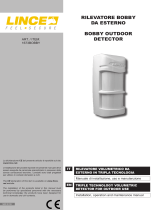 Lince 1673BOBBY Istruzioni per l'uso
Lince 1673BOBBY Istruzioni per l'uso
-
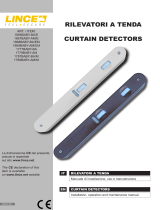 Lince 1866BABY-BA/E Istruzioni per l'uso
Lince 1866BABY-BA/E Istruzioni per l'uso
-
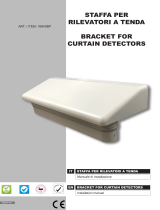 Lince 1962-SBP-M Istruzioni per l'uso
Lince 1962-SBP-M Istruzioni per l'uso
-
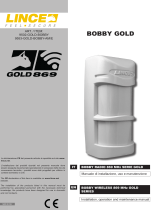 Lince 9553-GOLD-BOBBY-AM-E Istruzioni per l'uso
Lince 9553-GOLD-BOBBY-AM-E Istruzioni per l'uso
-
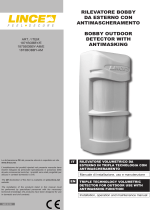 Lince 1875BOBBY-AM/E Istruzioni per l'uso
Lince 1875BOBBY-AM/E Istruzioni per l'uso
-
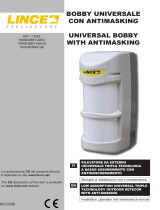 Lince 1897BOBBY-AM/UE Istruzioni per l'uso
Lince 1897BOBBY-AM/UE Istruzioni per l'uso
-
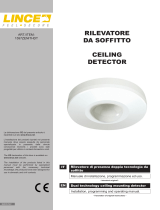 Lince 1597ZENITHDT Istruzioni per l'uso
Lince 1597ZENITHDT Istruzioni per l'uso
-
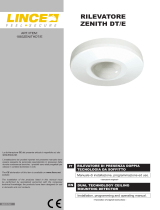 Lince 1883ZENITHDT/E Istruzioni per l'uso
Lince 1883ZENITHDT/E Istruzioni per l'uso
-
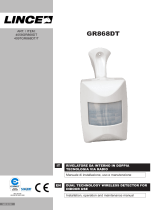 Lince 4058GR868DT Istruzioni per l'uso
Lince 4058GR868DT Istruzioni per l'uso
-
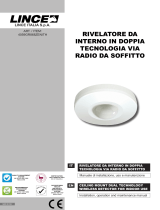 Lince 4059GR868ZENITH Istruzioni per l'uso
Lince 4059GR868ZENITH Istruzioni per l'uso
Altri documenti
-
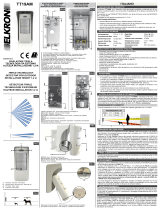 Elkron TT19AM Guida d'installazione
Elkron TT19AM Guida d'installazione
-
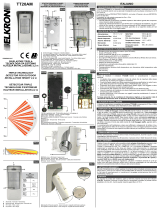 Elkron TT20AM Guida d'installazione
Elkron TT20AM Guida d'installazione
-
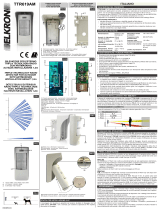 Elkron TTR619AM Manuale utente
Elkron TTR619AM Manuale utente
-
Ksenia velum DT + AM User And Installer Manual
-
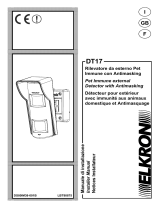 Elkron DT17 Guida d'installazione
Elkron DT17 Guida d'installazione
-
Ksenia UNUM User And Installer Manual
-
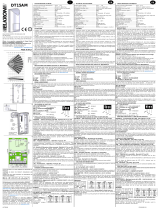 Elkron DT15AM Guida d'installazione
Elkron DT15AM Guida d'installazione
-
Risco WatchOUT XTreme 315DT Installation Instructions Manual


































